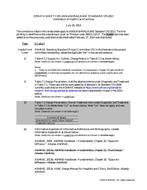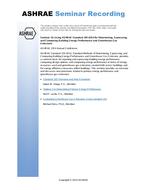Click here to purchase
An air-conditioning system is generally nonlinear, and the parameters such as the gain constant, the time constant, and the deadtime in a linearized plant model are strongly affected by the supply airflow rates (or a control input). Unstable control characteristics may occur if the parameters are excessively large in the region of too-small supply airflow rates. When the parameters vary due to changes in the operating points (that is, an equilibrium point given by a function of control input and disturbance inputs), one of the main issues in tuning proportional-integral-derivative (PID) controllers is stability. To avoid such instability, decentralized controllers (two single-loop controllers) for temperature control in a variable- air-volume (VAV) system are presented. A decentralized controller is designed to bring the supply airflow rates back to some desired amounts. When the supply airflow rates become smaller than the necessary amounts, the decentralized controllers are shut down except the centralized (primary) controller. The temperature control mode can be changed from the decentralized controller to the centralized one. Typical daily simulation results showing the control performance of the decentralized controllers are presented.
Citation: ASHRAE Transactions, Volume 117, Part 2, Montreal, QC
Product Details
- Published:
- 2011
- Number of Pages:
- 8
- File Size:
- 1 file , 2.3 MB
- Product Code(s):
- D-ML-11-033


